Something to Be Scared of: Retailers Market ‘Sexy’ Halloween Costumes to Little Girls
Costumes for little girls are now firmly part of the trend toward an overly sexualized Halloween celebration.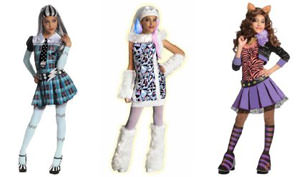
There was a time when Halloween costumes were supposed to resemble the character you were actually attempting to imitate. But these days, if you’re a woman, you’re expected to don a lacy, cleavage-revealing bodice and a short skirt with only the most minimal accessories to invoke an actual costume. Worse, costumes for little girls are now firmly part of the trend toward an overly sexualized Halloween celebration.
Now, little girls have the option to dress as a French maid or a 1950s waitress “from the good old days.” Such costumes are offered as a mainstay of the Halloween mass retail market. The world’s largest (and most notorious) retailer, Wal-Mart, recently offered for sale a toddler costume called “Naughty Leopard.” The costume does not resemble a leopard by any stretch of the imagination, save for the accompanying cat ears. Instead, it features a gauzy mini-tutu topped by a lace-up top resembling a corset or bustier in black with purple trim. A public outcry led to Wal-Mart pulling the costume off its shelves but only because, as a Wal-Mart spokeswoman spun it, customers were “offended by the name.”
These days the corset theme has become an unquestioned feature of girls’ Halloween costumes, whether designed for toddlers or teens. While browsing at a local drugstore recently, I came across two girls’ costumes that were essentially identical to the basic corset-tutu design of Wal-Mart’s Naughty Leopard, except for the colors and some minimal accessories (a red cloak for the Red Riding Hood costume, and a pair of wings and feelers for the Butterfly costume). I was aghast, but when I expressed my chagrin to the checkout cashier, I was met with a blank stare and a rote suggestion to file a complaint on their website.
Jean Kilbourne is an acclaimed scholar known for her analysis of sexualized images of women and girls. Her books include “Can’t Buy My Love: How Advertising Changes the Way We Think and Feel” and “So Sexy So Soon: The New Sexualized Childhood and What Parents Can Do to Protect Their Kids.” In a recent interview she told me, “Each year I think, ‘it can’t get any worse,’ but then each year it actually seems to. And it seems to become more accepted somehow as if we become desensitized to it.”
But the sexualization of girls’ costumes ought not to surprise us — it is part of the ongoing general trend in girls’ clothing toward “sexy” adult women’s apparel in its tight fit, suggestive form, padded tops, lingerie, “barely-there” skirts and high heels.
Is there a correlation between this disturbing trend and eating disorders? Kilbourne said yes, “actually there is a proven link between the sexualization of girls and harmful effects on girls.” She cited the American Psychological Association’s recent study that found that across all media, portrayals of women and girls have become increasingly sexualized. These images have negatively affected girls’ mental and physical health leading to eating disorders, low self-esteem and depression.
Kilbourne said the most dangerous outcome is that “Girls who are exposed to heavily sexualized images tend to objectify themselves. When you think of yourself as an object, that is even more dangerous than being turned into an object by other people. They [girls] begin to think that what’s most valuable about them is their appearance and particularly how ‘hot’ and ‘sexy’ they are. And of course they’re getting this message from throughout the popular culture.”
In other words, it is the increasing “pornification” of women’s images in our culture that contributes to the pressure facing girls. Kilbourne told me “the language and the images of pornography are so mainstream that we get used to things like pole-dancing classes for suburban moms. We see our young celebrities dressing like porn stars. It’s a kind of mainstreaming of porn that is really alarming.” Singer Miley Cyrus’ recent performances and videos exemplify the standard that young girls — who form the majority of Cyrus’ fan base — are likely to hold themselves to in terms of dress, behavior and self-worth.
When I asked Kilbourne how she reacts to accusations of being prudish and puritanical about the trend toward “sexy” Halloween costumes for girls, she clarified that “sexualization has nothing to do with sexuality. Sexuality is something to be celebrated. But sexualization is about turning people into objects and telling them that they are valued only for their sexuality. There’s nothing prudish over being concerned about the mental health of our girls.”
Furthermore, it’s not just girls who are harmed. “Boys,” said Kilbourne, “are not sexualized in the same way that girls are, but boys these days are encouraged to objectify girls starting at incredibly young ages. And also boys are encouraged to feel that they should be somehow sexually active and precocious long before they’re ready for it.”
Retailers simply blame customers, saying there is a demand for such Halloween costumes. Kilbourne dismissed that argument: “No matter what outrageous thing marketers do, they always say ‘we’re just responding to what people want.’ But, to a great extent, people aren’t given a whole lot of choice.”I reached out to my own community of fellow parents to see how those people who have daughters (I have two sons) navigate the retail market during this time of year. Several friends told me that they simply steer their children away from the Halloween aisles at the store altogether while others wondered why any parent would buy these costumes for their children in the first place.
One female friend echoed a common theme, that the older their daughters get the harder it is to avoid the “sexy” costumes. She told me, “I’m disgusted with the sexualized costumes and those get rejected outright. It wasn’t hard at all when the kids were little (under 7). Now that M is older, it is harder. She’s as tall as an 11-year-old and that’s when the costumes get inappropriate. We may have to start making them next year.”
Another outspoken friend lamented the trend away from scary to sexy, particularly where witch costumes were concerned. She noted, “Now witches are just little slut bitches with a naughty little spanking spoon. WHAT? Where is the green face and warts? Why don’t they make witches the magnificent she-devils they should be?”
Kilbourne offered some suggestions of what parents can do to protect their daughters from the sexualization of commercial Halloween costumes. She recommended they “try to enlist other parents as allies in a neighborhood or a school to start talking about this so that your kid won’t be the only one who isn’t dressed this way. And, getting parents to understand that although this may seem ‘cute,’ it really isn’t and it really does have very harmful effects on girls.” She added, “That’s not my opinion. There’s a lot of research that backs that up.”
Kilbourne, who lists many useful resources on her own website, suggested that parents who want to take a more active role in pushing back against the retail Halloween market can also support the efforts of groups like Campaign for a Commercial-Free Childhood.
Some mothers of daughters who have scoured the Internet for alternatives, recommended to me blogs like Princess Free Zone and A Mighty Girl, as well as online stores offering alternative toys and clothes for girls.
While bucking the pressures of a commercial trend requires serious effort and persistence, what’s at stake is the self-esteem of an entire generation of young girls. As one frustrated mother told me, this Halloween “we need to stop pimping our baby girls out!”
Your support matters…Independent journalism is under threat and overshadowed by heavily funded mainstream media.
You can help level the playing field. Become a member.
Your tax-deductible contribution keeps us digging beneath the headlines to give you thought-provoking, investigative reporting and analysis that unearths what's really happening- without compromise.
Give today to support our courageous, independent journalists.
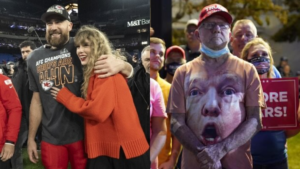
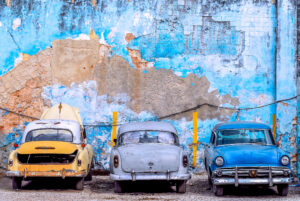
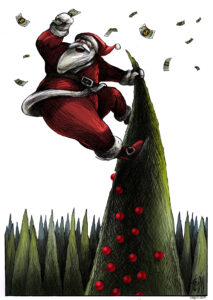
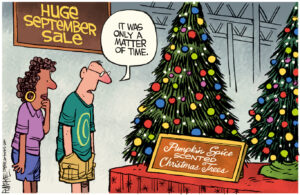
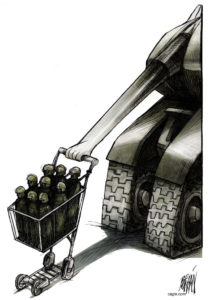
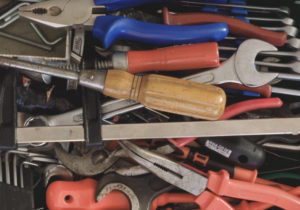
You need to be a supporter to comment.
There are currently no responses to this article.
Be the first to respond.